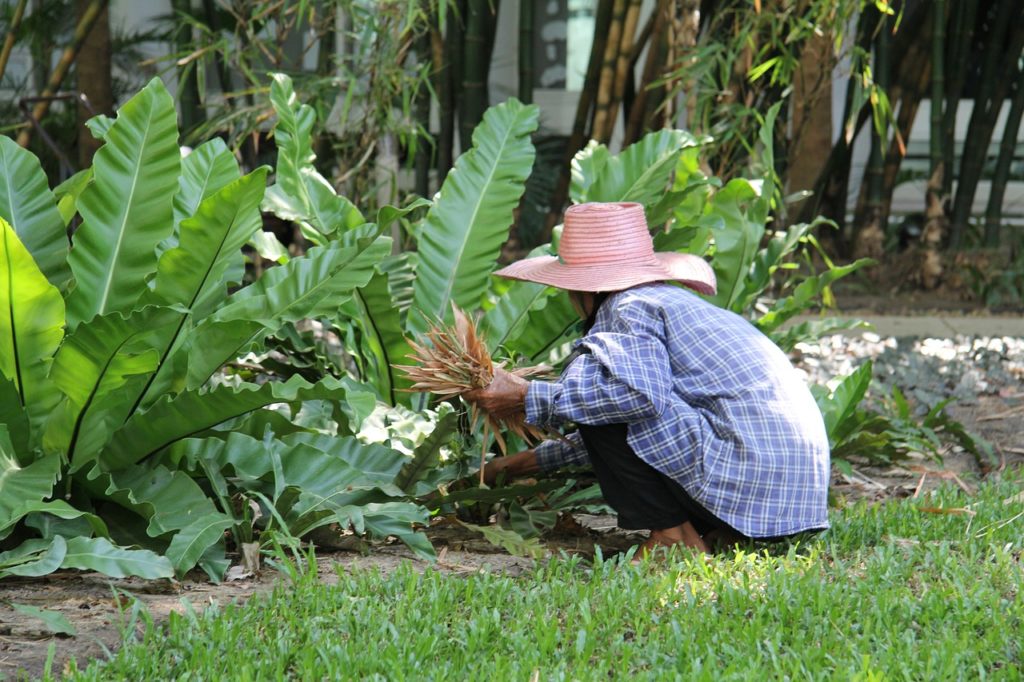With fall coming up you are ready to change out your flower beds, mulch, and add fall flowers and decor. It is a source of joy and accomplishment for avid gardeners. However, gardening is more physically demanding than a lot of people realize. You can develop back pain when gardening due to the awkward postures and lifting involved, or you may exacerbate existing back pain if you are not careful.
So does that mean that you should avoid gardening?
Probably not! But it does mean that you need to be smart about how you garden. If you have a herniated disc for example, you need to limit forward bending that makes the condition worse. So be sure to talk to your doctor or physical therapist to find out what the cause of your back pain is, so that you understand what positions you should and shouldn’t avoid. A physical therapist can also provide you with some stretches and warm-up exercises to do before you begin gardening.
Here are some other tips for gardeners to reduce existing back pain, or prevent the development of back pain in the first place:
- Be careful how much you lift – Bags of soil, mulch, and fertilizer are heavy and can cause you to hurt your back. If you have osteoporosis, lifting heavy items can cause fractures of your spine. Instead of lifting the full bags, divide them into lesser amounts so that they are not as heavy. The ideal way to lift something is to bend down with your knees, so that your legs do the work. However, if the object is still too heavy or is awkward to hold or lift, you are putting your back at risk. Instead, consider using a dolly, wagon, wheel barrow, or garden cart to carry the items to where you need them. If necessary or if you are at high risk of injury, enlist the help of someone who can help you. Instead of lifting heavy watering cans, put less water in them (i.e. don’t fill them). It is better to hold one in each hand (with less water) to keep your spine level. Even better, though, is to use a watering hose or set up inground irrigation or sprinkler systems.
- Get close to what you are doing – We have all seen people who are standing in their garden with their hips bent over with a rounded back. This can result in back pain, especially if prolonged. It is better to kneel or squat, as it is easier to get closer to your plants to tend to them, and reduces the stress on your back. To improve your comfort in kneeling, consider getting a kneeler seat. You can find these online. They also can make it easier to get down to the ground and back up, considering your pain may also be limiting your physical abilities. You can use a kneeler seat in two different ways – you can kneel on the spongy surface, and use the push handles to lower yourself and stand back upright OR you can turn the surface over and use the spongy surface as a seat instead. Alternatively, you may prefer a small garden stool that you can sit on. The key is that you don’t sit with a rounded back.
- Change positions frequently – Static, prolonged postures result in stiffness and increased risk of pain. Be sure to stand up and stretch in the opposite direction every 20 to 30 minutes, or before you get stiff.
- Pace yourself – Work in your garden for short periods when it is cooler outside. Don’t rush, as this only causes you to tense your muscles and can increase the pain. It also means you may move too quickly, and increase your chances of getting hurt or aggravating the pain.
- Consider elevated gardens and flower beds – Commonly used for people with knee pain or arthritis, elevated garden beds can reduce the amount of bending and lifting you have to do. You can also hang pots from a balcony at a height that avoids having to bend. You can plant flowers or herbs in these hanging pots.
- Consider wall or vertical gardening – You’ve no doubt seen climbing vines on trellises. But did you know that you can also grow vegetables vertically. Beans, squash, tomatoes, and cucumbers can be grown vertically. You simply create flat surfaces along the vertical axis, and then add pots or soil trays.
To summarize, back pain need not steal your joy and passion for gardening. In many ways, it can be therapeutic. By making some modifications to the environment and how you approach tasks, you can continue to enjoy gardening.

Article written by Kathy Lawrence, PT, DPT.
Kathy Lawrence has 20 years of experience as a Physical Therapist. Kathy received her Masters of Physical Therapy in 1999 from the University of Wisconsin – Madison. Then followed up with her Doctorate Degree in Physical Therapy in 2008 from A.T. Still University. She prides herself in her focus on Healthy Aging. Whether it’s wellness, pain management, or helping recover from an injury Kathy has been instrumental in keeping our aging population on their feet.


